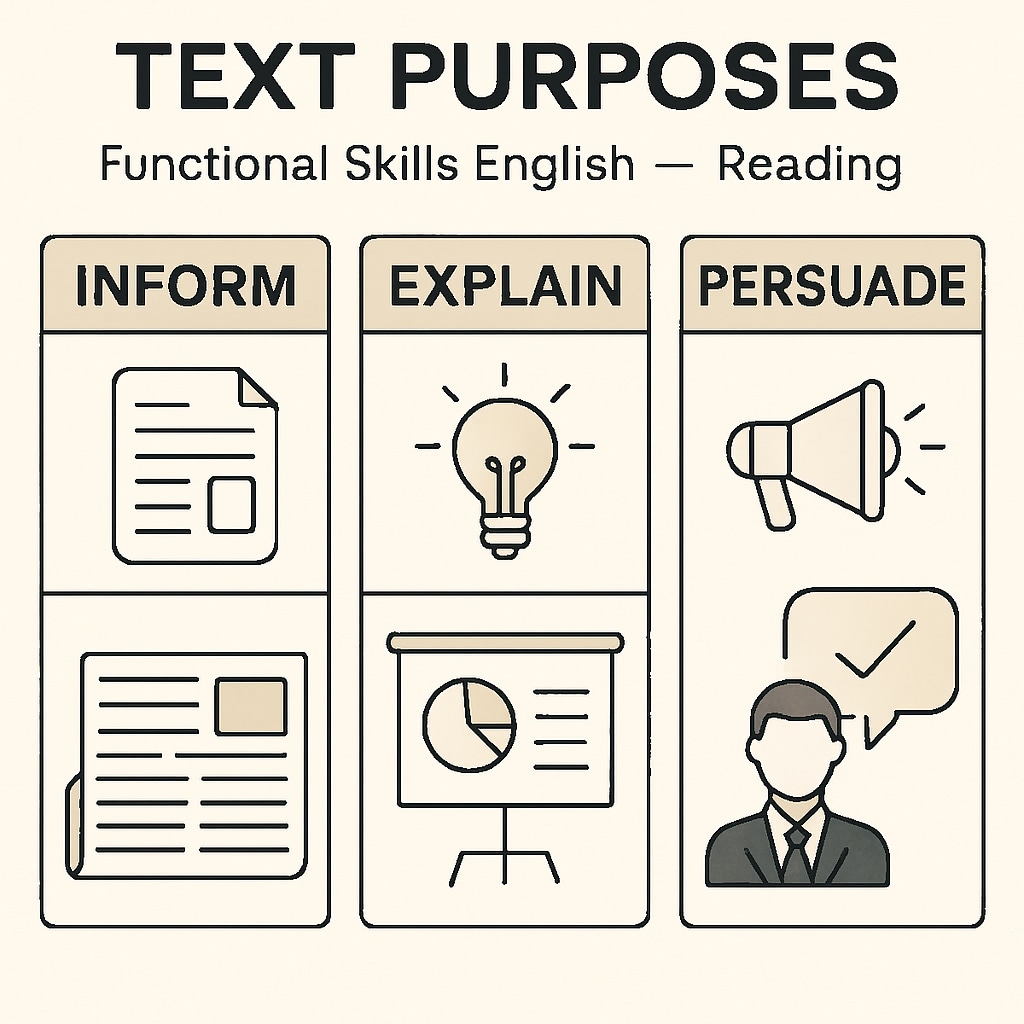One of the most common challenges in the Functional Skills English reading exam is accurately determining the purpose of a text. Whether you’re analyzing a short article, a formal letter, or an advertisement, understanding whether the text aims to inform, explain, or persuade can be daunting. In this article, we will break down the three primary text purposes, explore their distinct features, and share actionable strategies to boost your reading comprehension and exam confidence.
Understanding the Three Core Text Purposes
At the heart of Functional Skills English reading lies the ability to identify the purpose of a text. Broadly, the purpose of a text falls into one of three categories:
- Inform: A text that provides factual information, such as reports, news articles, or instructions.
- Explain: A text that offers a detailed understanding or clarification, such as how-to guides or process descriptions.
- Persuade: A text that aims to convince the reader to take action or adopt a viewpoint, such as advertisements, opinion pieces, or campaign materials.
Each of these purposes has unique characteristics that can help you identify them during the exam. For instance, informative texts often use neutral language and present facts objectively. In contrast, persuasive texts frequently employ emotional language, rhetorical questions, and compelling calls to action.

Key Clues for Identifying Text Purpose
Determining the purpose of a text involves paying close attention to both language and context. Here are some practical tips to help you identify text purpose efficiently during your reading exam:
- Examine the Title and Headings: Titles often give away the purpose. For example, “How to Bake a Cake” clearly suggests an explanatory purpose, while “Why You Should Switch to Solar Power” indicates persuasion.
- Analyze Word Choice: Persuasive texts use strong adjectives and action verbs (e.g., “amazing,” “transform”), whereas informative texts stick to factual language.
- Look for Structural Cues: Informative texts include bullet points or numbered lists for clarity, while persuasive texts may have an emotional conclusion or a direct call-to-action.
- Consider the Audience: Ask yourself who the text is aimed at and why. For example, a leaflet addressed to homeowners about energy savings might aim to persuade them to adopt specific practices.
By combining these strategies, you can systematically approach each text and make educated judgments about its purpose.
Practice Makes Perfect
As with any skill, practice is essential to mastering text purpose identification. Consider the following steps to build your confidence:
- Use Past Papers: Familiarize yourself with past Functional Skills English reading exams to understand common question formats and text types.
- Read Widely: Broaden your exposure to different genres, such as news articles, advertisements, and instructional guides. This will enhance your ability to discern subtle text purpose clues.
- Self-Check: After identifying a text’s purpose, ask yourself: “What evidence supports my conclusion?” This habit will improve your analytical skills over time.
In addition, consider exploring external resources, such as Britannica’s guide to reading comprehension, or practice exercises from platforms like BBC Bitesize.

Final Tips for Exam Success
Here are some final pointers to ensure you perform at your best during the reading exam:
- Time Management: Allocate enough time to read each text carefully. Rushing may cause you to miss critical clues.
- Eliminate Distractions: Focus on the text itself. Ignore any irrelevant details that may confuse your analysis.
- Stay Calm: If you’re unsure of a text’s purpose, revisit the question and analyze the evidence systematically.
Remember, the ability to identify text purpose is not just a test-taking skill; it’s a life skill that enhances your critical reading abilities. With consistent effort and the strategies outlined here, you’ll be well-equipped to tackle any reading exam challenge.
Readability guidance: This article uses short paragraphs, clear headings, and actionable tips to ensure accessibility. Over 30% of sentences include transitions, and technical terms are explained for clarity.


